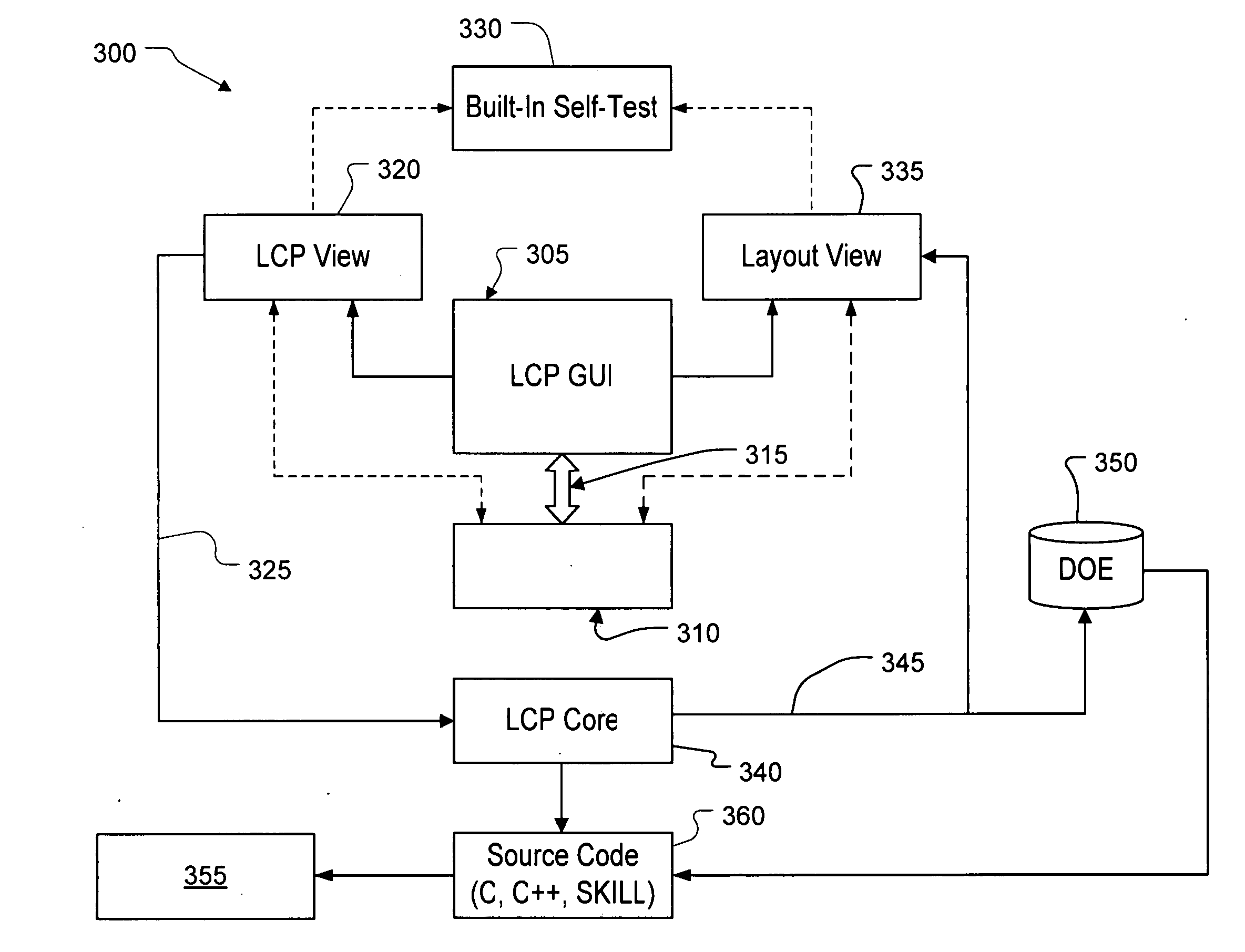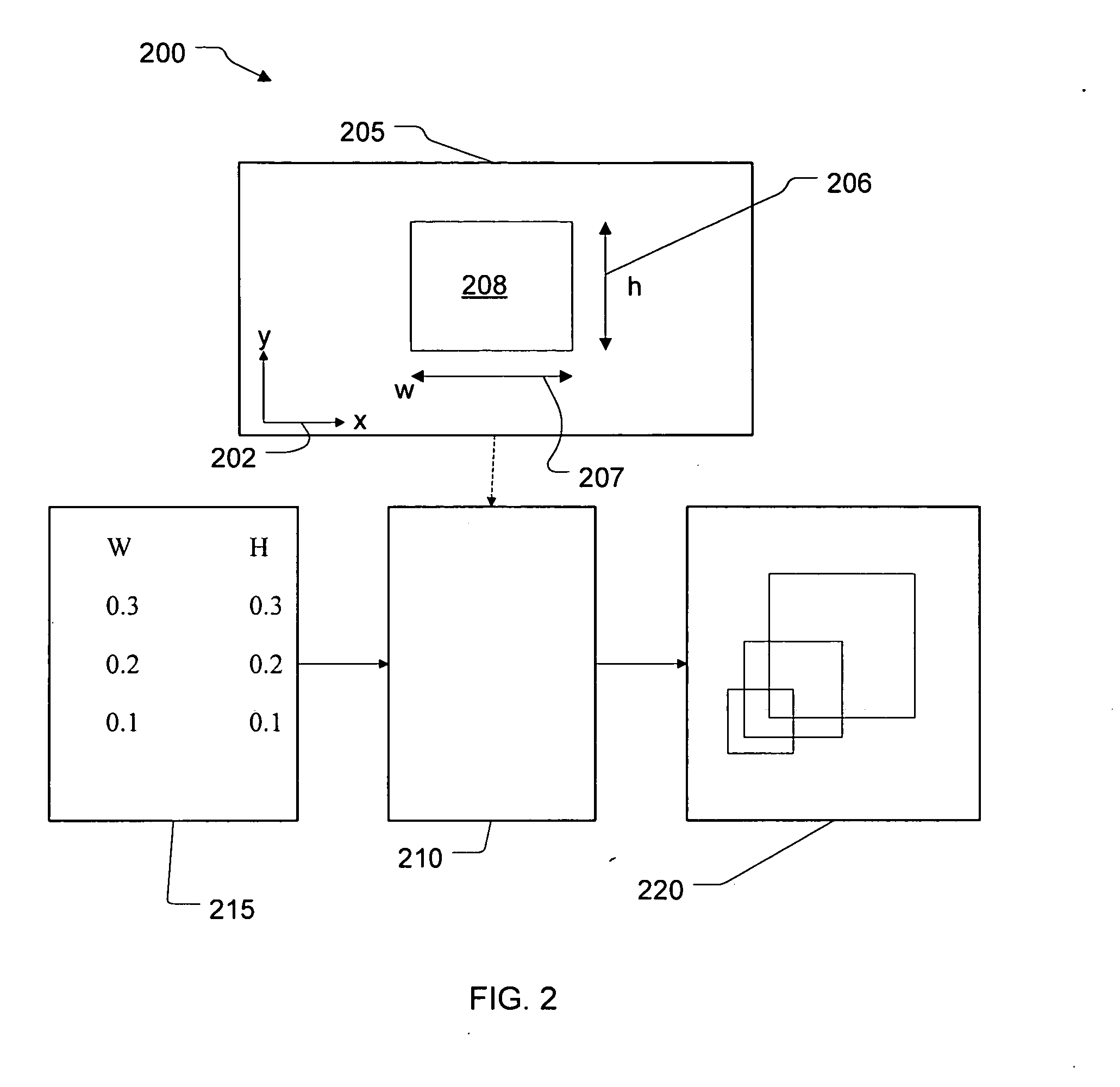Layout compiler
a layout compiler and compiler technology, applied in semiconductor/solid-state device testing/measurement, instruments, measurement devices, etc., can solve problems such as inflexibleness, inability to easily reuse layouts in a given design, and easy errors in drawing shapes comprising layouts
- Summary
- Abstract
- Description
- Claims
- Application Information
AI Technical Summary
Benefits of technology
Problems solved by technology
Method used
Image
Examples
Embodiment Construction
[0028]FIG. 1A illustrates a top view of layout for a via chain 100. Via chain 100 comprises a connector 105 in a top metal layer, connected by via 115 to a metal run 110 in a lower metal layer. Metal run 110 in turn is connected to a metal run 120 in the top metal layer through via 125. In turn, metal run 120 connects with metal run 130 through via 135. Ultimately, via chain 100 terminates at connector 150. Thus, via chain 100 is, when formed on a semiconductor wafer, an interconnected series of metal lines running through two separate layers of metal (other via chains can include metal runs in more than two layers), where those layers are connected by vias.
[0029]As such, via chain 100 allows a process to be tested and examined for via alignment with metal layers, for example. This testing may proceed by applying a voltage across connector 105 and connector 150 and measuring a current flow through via chain 100. Variations in current from what is expected may be indicative of alignm...
PUM
 Login to View More
Login to View More Abstract
Description
Claims
Application Information
 Login to View More
Login to View More - R&D
- Intellectual Property
- Life Sciences
- Materials
- Tech Scout
- Unparalleled Data Quality
- Higher Quality Content
- 60% Fewer Hallucinations
Browse by: Latest US Patents, China's latest patents, Technical Efficacy Thesaurus, Application Domain, Technology Topic, Popular Technical Reports.
© 2025 PatSnap. All rights reserved.Legal|Privacy policy|Modern Slavery Act Transparency Statement|Sitemap|About US| Contact US: help@patsnap.com



